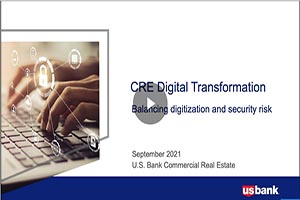When your business is thriving, it’s natural to consider expanding by adding a new location or moving into a larger space. After all, the goal for most owners is to grow their business. Scaling too fast or too soon, however, can have negative repercussions. You might stretch your resources too thin or overburden yourself and your staff.
If you’re considering an expansion, it’s key that you do so safely and efficiently to protect your business and assets. Here are six strategies to help you better prepare to scale your business:
1. Research before you scale
Before you commit to an expansion, you’ll need to do some research first. Take a hard look at your business and the reasons for your success. Is your sales growth due to a busy season, trend or high-performing employee? Or have you been experiencing a steady increase in foot traffic due to persistent marketing, positive word of mouth and a competitive edge? Expanding when your growth is based on things within your control is less risky.
You’ll also want to gather some market research. Ask your customers why they patronize your business and if there are any products or services that they would like you to start offering. In addition, research your competitors. Identify what they are doing that you’re not and decide if you need to expand your products or services. You should also compare your products and services to see if you have a competitive edge you could promote.
2. Make a business-scaling plan
With growth as the goal, you’ll want to ensure your resources are growing alongside your output. Start by performing a sales growth forecast based on the number of new customers and orders you've generated in the past year. Determine a realistic amount of revenue you can anticipate with your growth a year from now. You will need to boost profits enough to support the expansion.
Next, do an expense forecast outlining your growth's costs, such as adding new employees, products, square footage or advertising. Your profit and loss statement will help you estimate your expenses and anticipate your potential profits.
Also, create a marketing plan for promoting your expansion. You’ll want to get the word out before you make any changes and gather input from existing and potential customers that could help you with your launch.
3. Get financing to grow
Scaling a business requires an influx of money to cover your new costs, such as hiring extra staff, installing new equipment, and adding to your facilities. You’ll want to have funding in place before you act on your growth plan, so you aren’t scrambling for funds to support your strategies. Take advantage of your bank's small business financial services if you don't have cash reserves that will cover the extra expenditures; a business loan or line of credit that can be important to realizing your growth strategy.
You may also be able to take advantage of fundraising opportunities. If you’re launching a product that might generate a lot of interest and hype, a crowdfunding platform could be a great place to bring your idea to the public and create pre-sales. You could also seek out investors and partners in your industry that may help you grow by offering capital or taking an active role in the expansion. Keep in mind that while these partnerships can strengthen your business, they will create barriers as well, such as not having as much creative control or decision-making power.
4. Delegate and automate while scaling your business
Working towards growth usually leads to longer days in the office. Delegate what you can to put your focus where it matters most. Small business owners often retain control of too many tasks. Consider delegating anything that doesn’t require your personal attention to someone on your team. Not only will you free up time, but you'll also provide an employee with an opportunity to learn new skills.
Another way to lessen your load is to leverage technology and automate tasks that streamline operations. For example, you might add a chatbot to your website to answer routine customer questions or track orders. Or you can set up automatic payments with your bank to reduce the time it takes to pay bills. The minutes you save here and there will add up.
5. Find staff that make sense as you scale
If you need to hire new employees for your expansion, look for people with a broad set of talents you can leverage. For example, if you're hiring a manager for your new location, look for someone with another valuable skill, such as experience with social media marketing.
Or, if bringing on an additional staff member doesn’t make sense, use the services of an independent contractor. This can be a good solution for a short-term or seasonal need, such as promoting your grand opening or providing extra help during a busy cycle.
6. Use feedback loops for successful growth
The growth period is volatile and having a pulse on how your expansion is going is key to maintaining growth. Feedback loops can help you course correct and turn things around quickly. For example, use analytics to measure the effectiveness of your marketing campaigns. Look at metrics like traffic and conversions. Look at your new employees' sales numbers to ensure you made the right hiring choice or offered adequate training. Measuring results can provide you with the information needed to make quick pivots.
The growth phase of a business is an exciting and rewarding time. Being able to scale your business signals that your idea and its execution are needed in the marketplace. By taking an intelligent approach to growth, you'll help your business continue to thrive for years to come.
Get more resources and information on how to successfully manage your small business’ growth.































